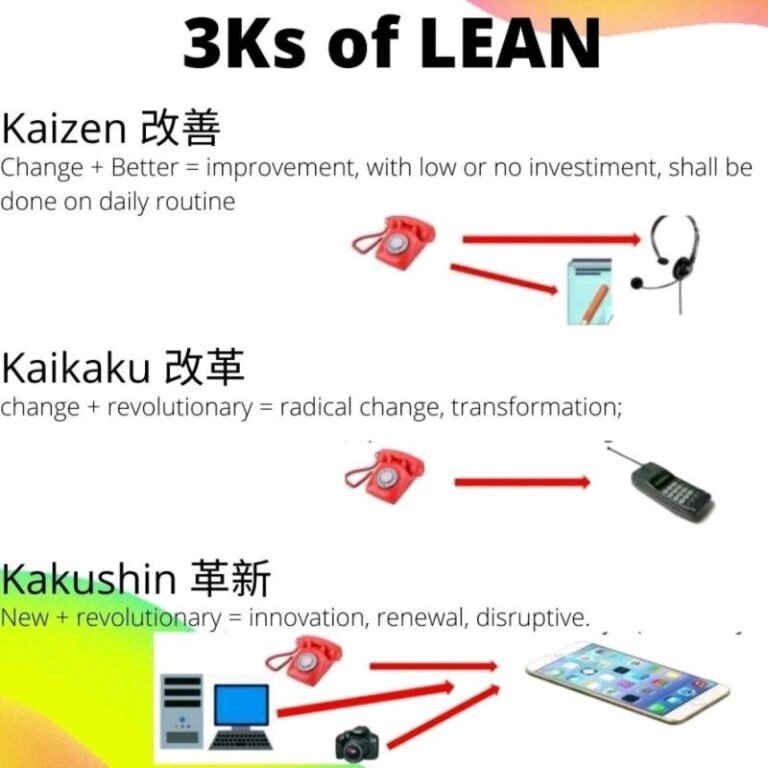Kaizen, Kaikaku, and Kakushin are three key principles of Lean manufacturing that focus on continuous improvement, innovation, and transformation. Each of these principles plays an important role in helping organizations to achieve greater efficiency, quality, and competitiveness.
Here is an overview of each principle:
- Kaizen – Continuous Improvement: Kaizen is a Japanese term that means “continuous improvement.” It is the idea that an organization should always strive to improve its processes and products. This means that everyone in the organization should look for ways to make improvements, no matter how small. By making small, incremental improvements over time, an organization can achieve significant gains in efficiency and productivity.
- Kaikaku – Transformation: Kaikaku is another Japanese term that refers to transformation. In Lean manufacturing, this means making significant changes to a process or system to achieve breakthrough improvements. Kaikaku is not about making small, incremental improvements; it’s about making bold, radical changes to a process or system. A crisis or opportunity typically initiates these changes, requiring significant resources and effort.
- Kakushin – Innovation: Kakushin is a Japanese term for “innovation.” Lean manufacturing means developing new products, processes, or systems that significantly improve quality, efficiency, or effectiveness. Kakushin involves creating something entirely new that has never been done before. It requires a high level of creativity, experimentation, and risk-taking.
In summary, the 3Ks of Lean provides a framework for continuous improvement, transformation, and innovation. By implementing these principles, organizations can achieve significant efficiency, quality, and competitiveness gains. Whether through small, incremental improvements, bold transformations, or innovative new products and processes, Lean manufacturing provides a path to success in a constantly evolving business environment.
